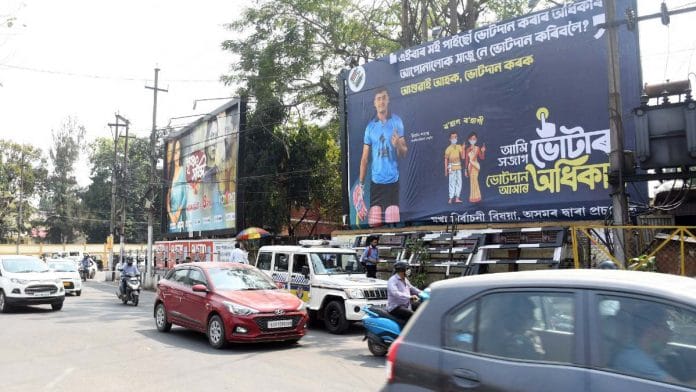New Delhi: Come 27 March, the three-phase race for the 15th Assam legislative assembly begins, with voting scheduled to end on 6 April. There are 13 political parties in the fray, including two coalitions led by the ruling BJP and the Congress.
The 2016 assembly elections saw the BJP form its first government in the state, and the party is now looking to score a second term. Meanwhile, the Congress, once the strongest political player in the state, is aiming to reclaim office after being reduced to just 26 seats in the 126-seat assembly.
Adding to the Congress’ challenges is the absence of its veteran leader Tarun Gogoi, Assam’s longest-serving chief minister, who passed away last year.
Some of the key issues on voters’ minds this season are the Citizenship Amendment Act (CAA), the National Register of Citizens (NRC), Covid-19, tea garden workers’ wages, rising fuel prices, and unemployment.
Prominent candidates in the fray include Chief Minister Sarbananda Sonowal and state minister Himanta Biswa Sarma from the BJP, and on the Congress side, state chief Ripun Bora and MLA Rupjyoti Kurmi.
Activist Akhil Gogoi, who has been in jail for more than a year over allegations that he instigated violence during the anti-CAA protests in 2019-20, is contesting his maiden election as part of his newly floated Raijor Dal, or “people’s party”.
Also Read: Assam ally BPF’s split from BJP ‘to help Congress but ruling party has no reason to worry’
Demography & voting pattern
Assam is composed of the Brahmaputra Valley and the Barak Valley, and the two hill districts of Karbi Anglong and North Cachar Hills.
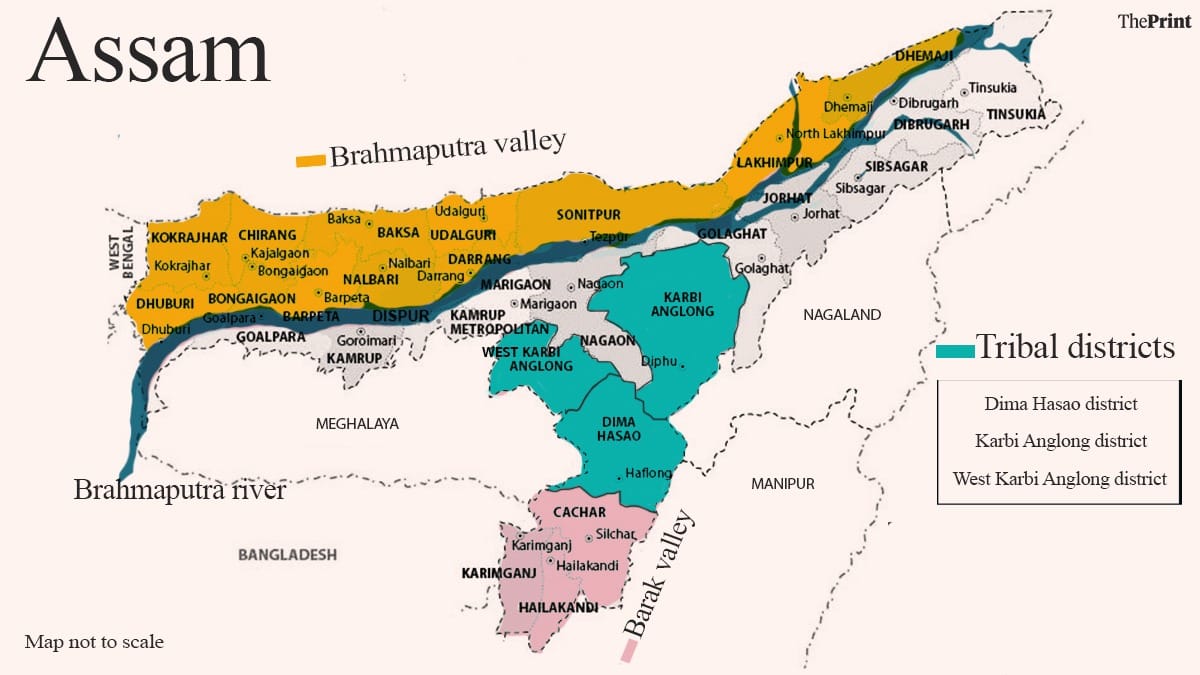
Around 61.47 per cent of the state’s population is Hindu while 34.22 per cent is Muslim (2011 Census). As a result, the state’s indigenous population is extremely diverse in terms of culture, language and religion.
The state also has 10 autonomous councils, which provide a certain level of autonomy to the plains tribes of Assam under the Sixth Schedule of the Constitution. They were set up in order to bring the tribal people into mainstream politics and also for their welfare.
A strong sense of Assamese sub-nationalism is known to be at play in the upper Brahmaputra Valley, where the CAA became a major issue.
The CAA seeks to ease citizenship for persecuted members of six non-Muslim communities from the Muslim-majority countries of Bangladesh, Pakistan and Afghanistan. However, the influx of migrants from Bangladesh — irrespective of religion — has for decades been a sore point for many sections in Assam, who see the arrivals as a threat to livelihood and land.
The anti-CAA sentiment has been the strongest in Upper Assam (including districts such as Jorhat, Dibrugarh, Dhemaji, and Golaghat), which is a stronghold of CM Sonowal.
There are 33 Muslim-dominated seats that are scattered in Lower Assam (including districts such as Barpeta, Goalpara, Bongaigaon, and Nalbari) and the Barak Valley. The latter is dominated by those of Bengali origin.
Also Read: Assam’s fascinating politics & how RSS took BJP to the top in a state where it didn’t exist
Political players & power shifts
There are two major alliances in the election. The one led by the BJP consists of the regional Asom Gana Parishad (AGP) and United People’s Party Liberal (UPPL). The Congress coalition — called ‘Mahajoth’ — includes Badruddin Ajmal’s All India United Democratic Front (AIUDF), the Anchalik Gana Morcha (AGM), the CPI (M), the CPI (ML), and Rashtriya Janata Dal (RJD).
The Bodoland People’s Front (BPF), which contested the 2016 election with the BJP, is now back with the Congress.
The 13 political parties in the race also include two born out of the state’s anti-CAA movement — the Jatiya Parishad and the Raijor Dal. The two parties have come together as the United Regional Front.
Assam’s voting pattern is highly influenced by its complex history — a major factor being the continuous influx of refugees from the erstwhile East Pakistan (now Bangladesh) in the post-Independence period, especially after the creation of Bangladesh in 1971.
The Congress was the dominant player in Assam until the 1980s, when the Assam agitation led to new political formations, including the AGP. The six-year Assam agitation — an uprising against immigrants in the state — led to the signing of the Assam Accord in 1985, when Rajiv Gandhi was prime minister.
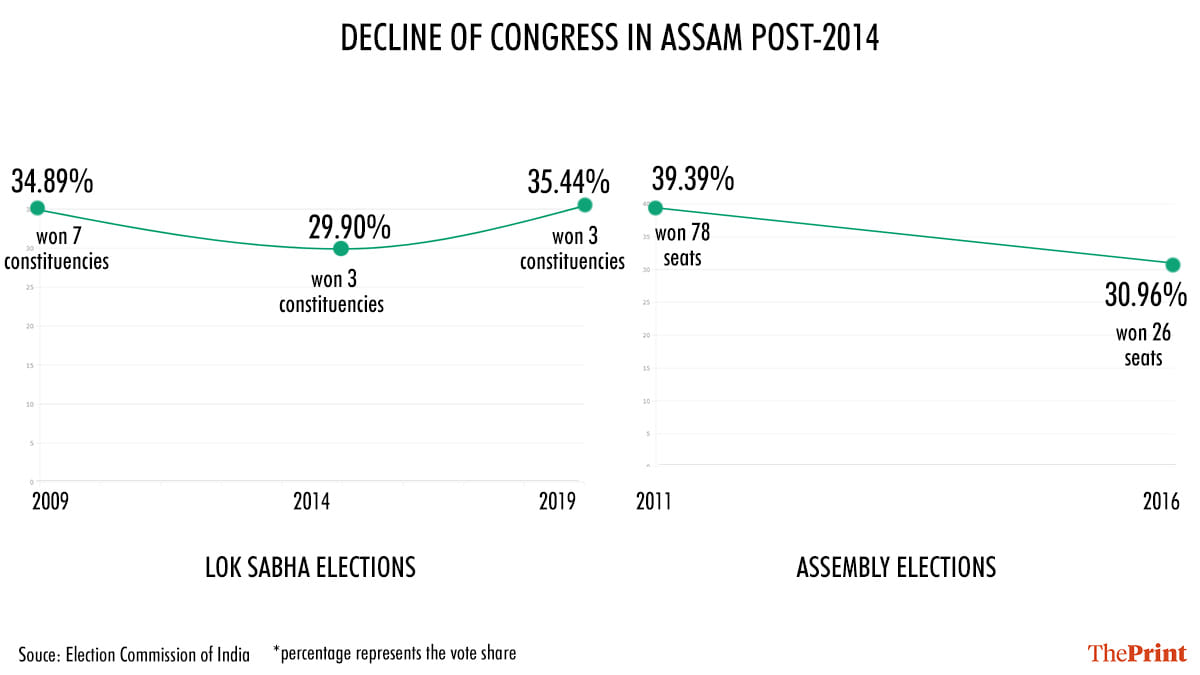
Prafulla Mahanta of the AGP went on to become the youngest CM of the state in 1985. The AGP became a strong regional player and retained power in the 1996 elections, and Mahanta served two terms as CM. But he has been denied a ticket for the 2021 election.
Till the 2016 polls, the Assam elections revolved around two parties — the AGP and the Congress.
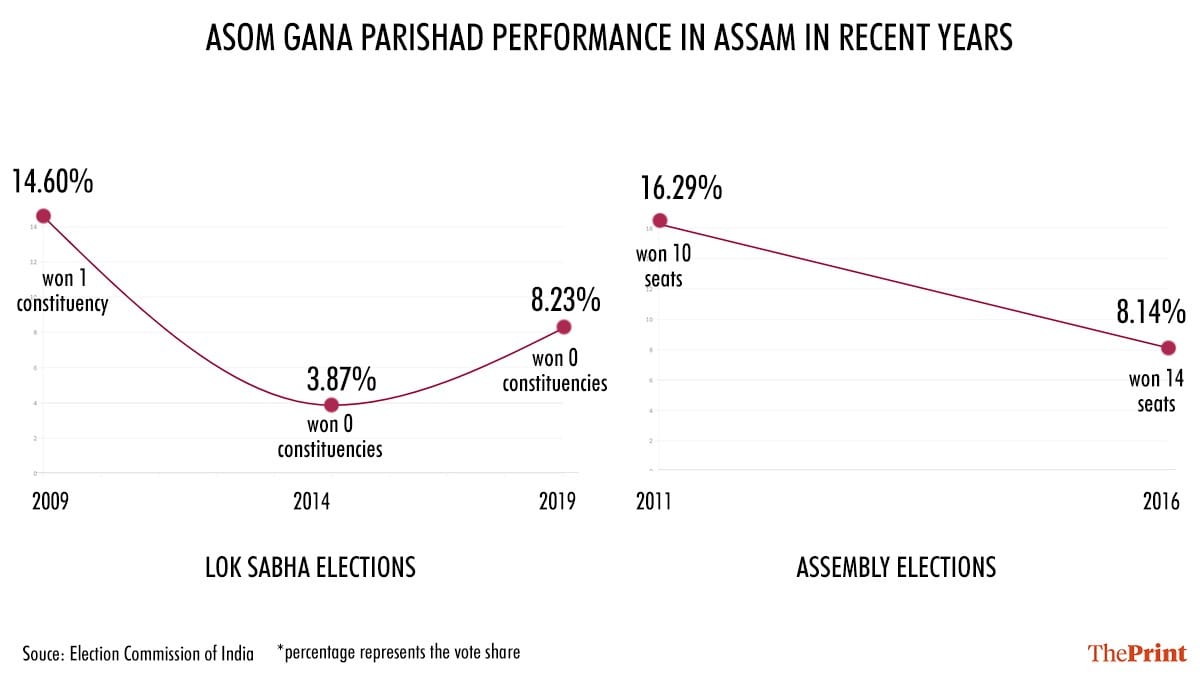
The BJP gradually moved into the space, cashing in on the exhaustion of voters with these parties. The Rashtriya Swayamsevak Sangh (RSS) and BJP’s vast cadre base as well as Prime Minister Narendra Modi’s popularity helped the party get a foothold in the state, and strengthen its grip. Himanta Biswa Sarma, who quit the Congress ahead of the 2016 election, also played a major role as the BJP’s chief strategist.
While it formed a government in the state only in 2016, the BJP had first shown promise in the 2009 Lok Sabha polls, winning four of the 14 seats, against the Congress’ seven.
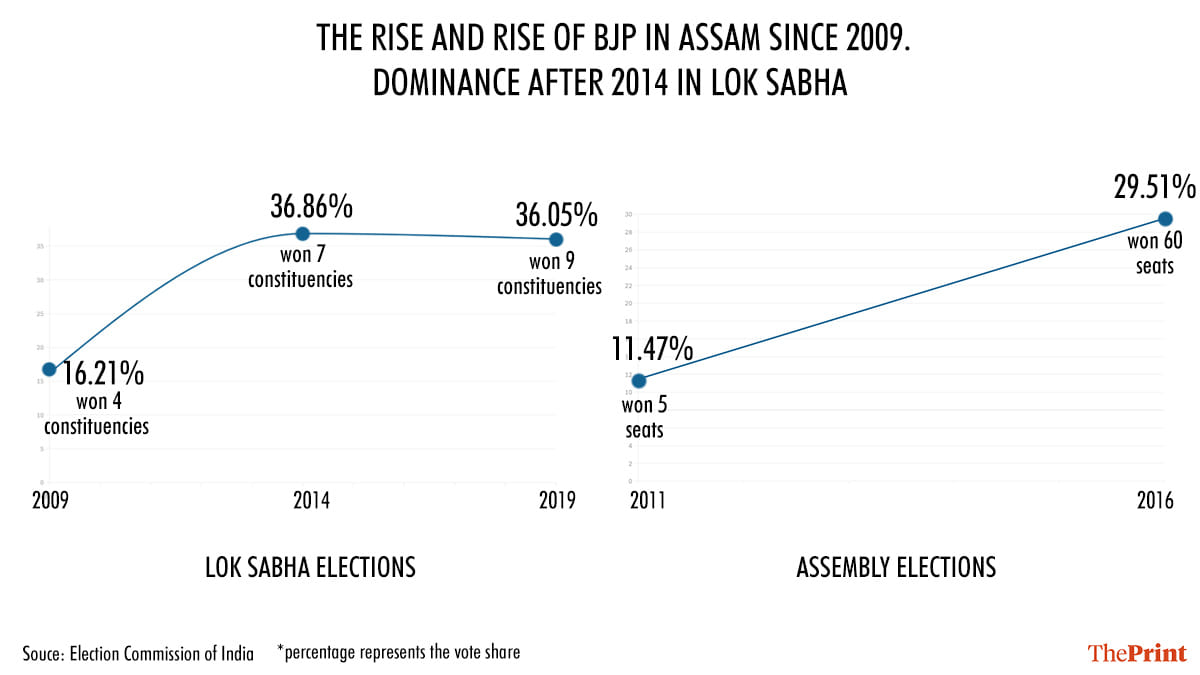
The Congress, meanwhile, began losing its base, including much of its Muslim vote, which went to the AIUDF, founded in 2005.
The other key regional parties are the UPPL and the BPF, whose influence remains limited to the Bodoland Territorial Region.
Also Read: Not West Bengal, but it’s the Assam polls that is most crucial for Modi-Shah this year
The vote-shares
In 2016, the BJP won 60 seats (out of 89 contested), which made it the single-largest party, while the AGP won 14 (30) and the BPF 12 (13). The Tarun Gogoi-led Congress won 26 (122), while the AIUDF bagged 13 (74) seats.
The BJP garnered a vote-share of 29.51 per cent, while the AGP and the BPF got 8.14 per cent and 3.94 per cent, respectively. The Congress had a vote-share of 30.96 per cent, and the AIUDF 13.05 per cent.
Key candidates in 2021 fray
Prominent candidates in the fray include Sonowal (contesting from Majuli), and Sarma (Jalukbari). Other BJP candidates include actor and incumbent MLA Angoorlata Deka (Batadroba), Ashok Singhal (Dhekiajuli), and Padma Hazarika (Sootea). Key Congress candidates include Ripun Bora (Gohpur), Debabrata Saikia (Nazira) and Rupjyoti Kurmi (Mariani).
Former All Assam Students’ Union (AASU) president Lurinjyoti Gogoi, now president of the newly formed Jatiya Parishad, is contesting from Duliajan.
Akhil Gogoi will contest from Sivasagar.
Right before the onset of the election season, artistes who came together to protest against the CAA — a Modi government legislation — got divided, with some joining the BJP and others going with the Congress. Those among the former defended their decision by saying they were misled about the CAA.
(Edited by Sunanda Ranjan)
Also Read: Why microborrowers in Assam are refusing to repay their loans this poll season



